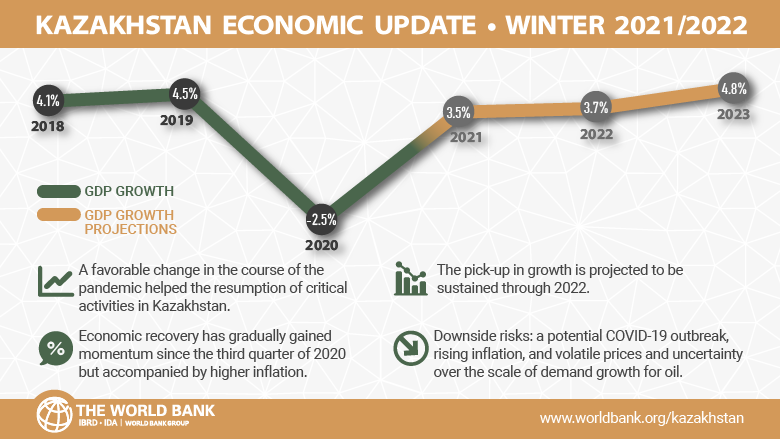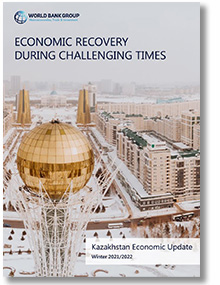After suffering a pandemic-driven slump in 2020, strong growth in aggregate demand supported real GDP. However, in 2021 inflation surged to its highest recorded level since 2016, driven mostly by food price inflation and prolonged disruptions in global supply chains. The inflation rate exceeded the central bank’s target range and prompted a tighter monetary policy stance.
The government’s countercyclical fiscal stance to support economic recovery is appropriate. In 2021, the government introduced a supplementary budget that included additional spending on healthcare, support to SMEs, and infrastructure projects. Despite additional fiscal support measures, higher oil and non-oil revenues will result in narrower budget deficit.
As of December 2021, the pick-up in growth was forecast to be sustained through 2022. Real GDP growth was projected to be around 3.7 percent in 2022, although the economy was expected to remain below the pre-pandemic baseline path for the entire forecast horizon.
The COVID-19 continues to be represent a key short-term risk. A more effective vaccination campaign and improvements in controlling the spread of the virus have become key short-term priorities. By the end of 2021, despite smaller population, only 45 percent of population was fully vaccinated, lower than in many developed economies. Without higher coverage, the reintroduction of containment measures would be needed, which could hamper growth and delay the projected recovery.
Rising inflation is another concern that erodes purchasing power, particularly among vulnerable households, and would require a tighter monetary stance, potentially affecting domestic borrowing conditions. This possibility also applies to Kazakhstan’s external borrowing cost once other central banks hike interest rates to tame inflation expectations.
Special Focus: The Challenges of Climate Change for Kazakhstan
Kazakhstan’s development path is vulnerable to climate change. Extreme temperatures in May and June 2021 caused a drought, which negatively affected wheat production—Kazakhstan’s most important agricultural export. Kazakhstan is vulnerable to climate change that exacerbates natural hazards such as floods, mudslides, and droughts. The country’s high reliance on fossil fuels also exposes Kazakhstan’s economy to global actions to cut greenhouse gas emissions.
The country is approaching a critical juncture in transitioning to a greener and more sustainable economy. At the 26th United Nations Climate Change Conference of Parties (COP) in Glasgow, Kazakhstan reaffirmed its commitment to achieving carbon neutrality by 2060 as part of the global effort to curb rising temperatures. On the one hand, the commitment opens opportunities for climate adaptation and renewable energies. On the other hand, Kazakhstan’s fossil fuel-dependent economy will face pressure from the green transition agenda. Therefore, a broad set of policies is needed to help Kazakhstan adapt, mitigate climate shocks, and support the transition to a low carbon economy, including supporting economic diversification. The transition will require measures to support a just transition for affected workers and communities, to minimize the impact on jobs and income of low-income households.

